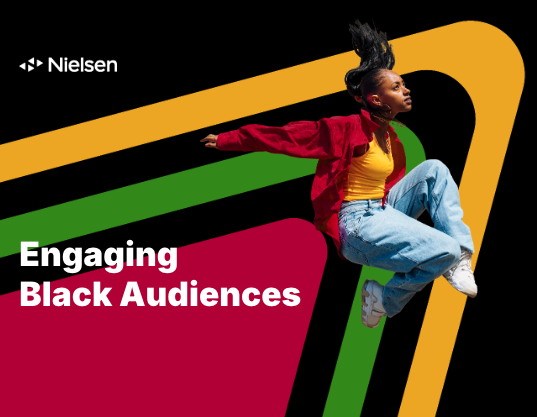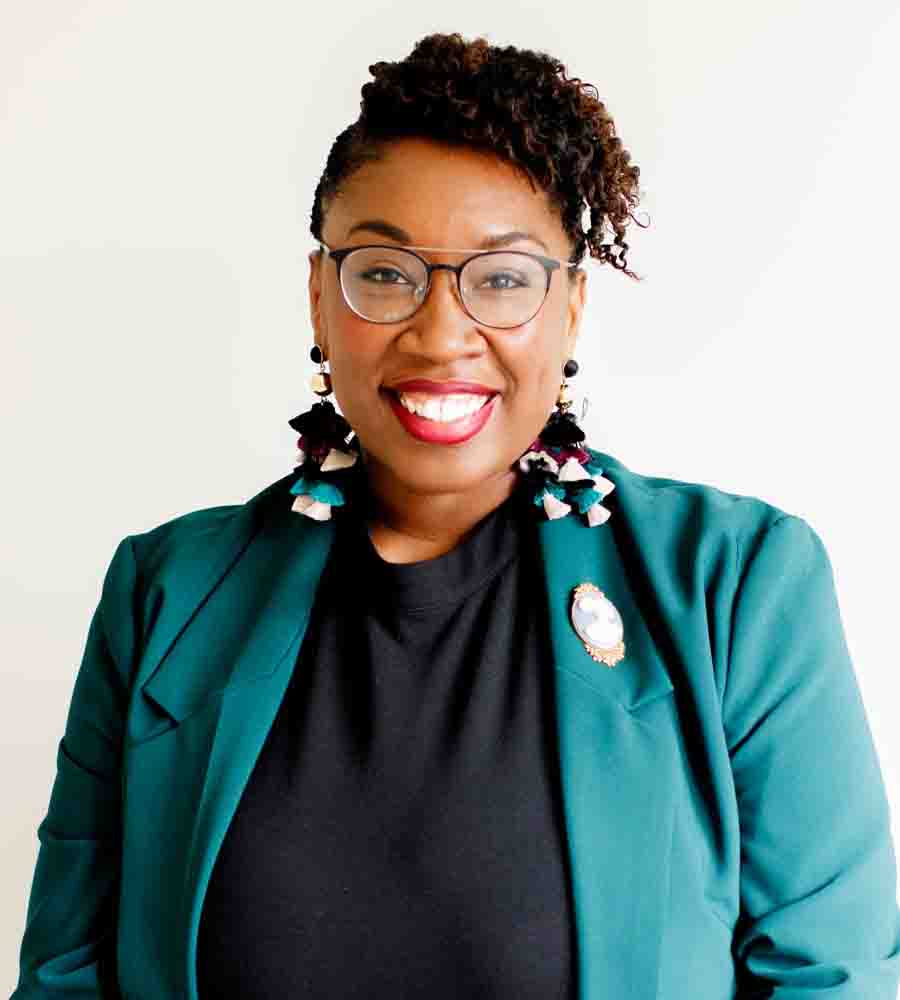
A new study from Nielsen, which arrives just in time for Black History Month, serves as a reminder that Black history is being made every day. That’s increasingly true in the economic landscape, where Black America wields an outsized impact thanks to audiences that lead media engagement across multiple channels.
The Nielsen report serves as a green light for brands and programmers to invest in customer-centric strategies that amplify Black voices. And opportunities abound. The study estimates that Black audiences will pack $2.1 trillion in buying power in 2026, up 2.4 times since 2000.
Nielsen’s introduction to the study, titled “Engaging Black Audiences: How brands impact, grow and win with inclusion,” drives home this message at this pivotal juncture for advertisers:
“One thing is certain, brands’ approach to Black consumers cannot be business as usual. As more Black people embrace the nuances of their diverse identities, they expect brand outreach and targeting to better understand and reflect them in order to earn their business long-term.”
Indeed, no audience is a monolith that can be reached by one-size-fits-all advertising. Sometimes the approach requires a more thoughtful approach via different channels. The bottom line? Expanding the net of inclusion is good for business.
The study is part of Nielsen’s “Diverse Intelligence Series” and arrives as a follow-up to a February 2024 research study from Nielsen, The global Black audience: shaping the future of media, which explored this increasingly influential demographic.
To help make sense of the latest installment, Spotlight spoke with Charlene Polite Corley, Nielsen’s Vice President of Diverse Insights.

“Really, this is a call to action and a reminder for advertisers that just trying to reach Black consumers is about more than just business as usual at this moment,’’ she said. “It’s about connecting to the audience that is engaging with media more so than any other population.”
Nielsen’s latest study, offers critical insights into the economic and cultural influence of Black consumers, reinforcing the importance of intentional and authentic engagement.
As a longstanding partner of Nielsen, the Geena Davis Institute recognizes the value of data in shaping industry practices, and this research provides a compelling case for why media and brands must move beyond generic outreach and truly connect with diverse audiences.
While the study focuses on consumer behavior and purchasing power, its findings highlight the need for storytelling, advertising, and content strategies that resonate with Black audiences in meaningful ways.
BLACK AUDIENCES ARE DIGITAL TRENDSETTERS
As the report notes, digital media trends are a perfect example of Black America’s outsized cultural and economic influence. Black audiences spend 31 hours and 56 minutes on apps and websites on their smartphones and tablets—two full hours more than the U.S. overall.
“There’s just this omnipresence of smartphones in particular, of just staying connected,’’ Corley said.
But any company looking for a return on investment on their ad dollar should know that it’s more complicated than that. Reaching Black audiences is one thing, but understanding how to connect deeply is the most important part.
As Corley put it, there is a difference between “Wow, they really get me!” versus “They just got to me.”
Considering how much time the Black community invests in social media and its influence in that space, brands should be on the lookout for how to create authentic connections. The Nielsen report suggests strategies such as deeper partnerships across channels with creators. A Nielsen Brand Lift study found 77 percent of creator fans felt connected to brands featured in creator content.
“The more that brands can really be intentional about what representation and inclusion looks like for their current and potential consumers – that can help make them even more effective,’’ Corley said. “Just putting up an ad and reaching someone doesn’t mean that that ad was effective, or that it was the best opportunity to really move somebody to take action.”
Nielsen’s research continues to show that the best way for brands to maximize the connection is to understand the nature of their conversations with Black audiences.
“What part of the culture are you speaking to? Because of course, there are differences in region, in lifestyle, and life stage that need to be taken into account now more than ever,’’ Corley said. “Yes, we are still a community and a diaspora, but intentionality and nuance can just really superpower a brand’s efforts and help them be more effective.”
Establishing those lines of communication could prove vital to the bottom line. Within the Black community, the influence of online buzz holds tremendous power. Nielsen determined that 44.4% of Black audiences reported buying products based on product recommendations from YouTube. That came as a bit of a surprise, considering word-of-mouth (43.7%) has historically been the key source.
“It was still close, but for Black Americans to say that – for more folks to say or agree that YouTube recommendations can have more sway than what you heard through your family or neighbors – was pretty interesting,” Corley said.
BLACK AUDIENCES ARE AVID LISTENERS
Nielsen’s research spotlighted how Black audiences tune in to audio-based media like podcasting and radio, which create personal connections to hosts – and the brands that support them.
The recent election cycle highlighted this phenomenon, the study notes, and underlined how podcasts offer audiences content that can seem less scripted and feels more authentic. There is something egalitarian about this medium – anyone with access to a microphone can start a podcast – but brands are still figuring out how to keep up with the fragmented media landscape.
Still, as Nielsen notes, the payoff can be worth it: Among Black listeners, podcast ads continue to drive strong brand recall, motivating listeners to learn more and make purchases. In fact, 73 percent of Black podcast listeners were able to recall a brand name after ad exposure compared to 70 percent overall.
Moreover, a recent Nielsen survey found that Black listeners were two times more likely to want to try a brand’s product advertised on local radio.
Corley views these statistics as an extension of how Black audiences have long gravitated toward trusted voices over the airwaves.
“It’s a cultural tradition, especially when it comes to African Americans,’’ she said. “Everybody after the election was talking about the engagement with podcasts and how important that was. But if you’ve been paying attention to data from these audiences, you know that there’s just something about audio that remains so centered to this culture. And whether that be radio or podcasts, there’s so much engagement.”
Radio and podcasts often have the advantage of delivering information in a conversational tone. Longtime listeners might even feel as if they’re hearing updates from a friend.
“It cuts to that tradition of having a conversation around these key pieces of content in the culture,’’ Corley said. “It extends really naturally to the podcast environment because it allows those people who maybe haven’t had the primary voice within the community to take the mic and talk about their experience.”
Nielsen’s survey found that 54 percent of Black listeners are more likely than overall listeners to buy a new product when their favorite podcast host or local radio personality mentions it.
“There’s just ongoing engagement with your local expert that knows the slang, knows the culture, knows the trends, knows the hit songs, but also knows the news and how it might impact you,’’ Corley said. “So there have just been decades of growing this connection when it comes to broadcast radio that remains in a lot of communities.”
The study spotlights the engagement of Black men from different age groups, including Gen X-aged men with online radio. Among Black listeners aged 18-49 the format gets 13.2 percent of all radio listening. This is a significant reach with a key demographic many advertisers are eager to engage.
“Maybe it also has to do with learning styles,’’ Corley said. “Really tuning in and hearing someone out and kind of having that conversation, and then oftentimes getting in on the conversation through comments or social media.
“So I think it’s part tradition, but also the innovation of getting to hear from more and more nuanced voices in the community than ever before. And it’s a perfect storm.”
BEYOND THE GAME: HOW SPORTS AUDIENCES INTERACT
When it comes to success stories in this space, the new basketball league called Unrivaled lives up to its billing. The 3-on-3 professional venture, which opened play in January, completed a riveting social media rollout by knowing exactly how to press their target audience’s buttons.
“Oh, my gosh, that’s a great example of somebody who is doing everything right,’’ Corely said. “They’ve been very digital-first. Particularly through Instagram, it’s really been kind of a slow drip, edge-of-your-seat type of strategy that has got everybody talking. Lots of engagement in the comment sections.”
One key has been centering the marketing on player stories, maximizing the compelling backgrounds of a diverse set of personalities. It’s helped drive the conversation about women’s professional basketball, specifically among Black audiences. Black fans are four times more likely to be very interested in the WNBA, according to Nielsen.
That success story drives home another finding from the Nielsen survey, which discovered that Black audiences are interested in so much more than the final score. Nielsen looked at an advanced audience of “sports superfans,” who represent the heaviest viewers of sports programming, and determined that while Black sports superfans underindex the broader sports superfan segment for watching sporting events, they’re the most likely to tune in for sports commentary.
“It’s about the game, but also the culture and context around the game,’’ Corley said. “It’s about the stats and the analysis and the ‘who’s training who’ and all of that behind-the-scenes stuff.”
That demographic wanted the commentary before and after sporting events, with an interest that was roughly four and a half times viewers in general.
“We’re seeing sort of an over-index with supporting ancillary content around the game, not just the game itself,’’ Corley said.
Advertisers should take note of the strategies that took root. Nielsen advised companies looking to make a connection to focus their investment on growing and amplifying women’s sports stories – especially for Black athletes whose contributions can often go unsung.
Furthermore, they suggested adding genuine value to the fan experience through consistent and authentic sponsorship across women’s sports. Nielsen noted that at 52 percent, Black fans are 5 percent more likely than all sports fans to believe that brand sponsors are socially responsible.
Look no further than the WNBA as proof.
“I think as the ‘W’ has continued to expand its programming strategies, the audience is answering the call and showing up,’’ Corley said. “So it’s really, really cool to see how a diverse set of audiences are driving a ton of growth and success across women’s sports.”
WHAT IT ALL MEANS
When Black Americans consume media, they seek culture and connection. For brands and programmers, that means exploring data-driven strategies so they can do more than merely reach Black consumers. The relationship must go deeper.
Nielsen’s study lists these findings as the two biggest takeaways:
- The right data partners and an inclusive approach to cross-media data are essential.
- Think beyond the generic ad buy to reach audiences wherever they’re tuned in
Corley is eager to see how this dynamic continues to evolve.
“You can have super-targeted communications, right?” she said. “And there’s a chance to take advantage of that to reflect someone’s unique experience. It’s a great opportunity to go beyond just reach and tap into a connection.
“But really connecting with us takes a little bit of a different approach – more intentional, more nuance. Because, like many other folks, there’s a demand to see perspectives and experiences reflected in the media and even the advertising that we consume.”
